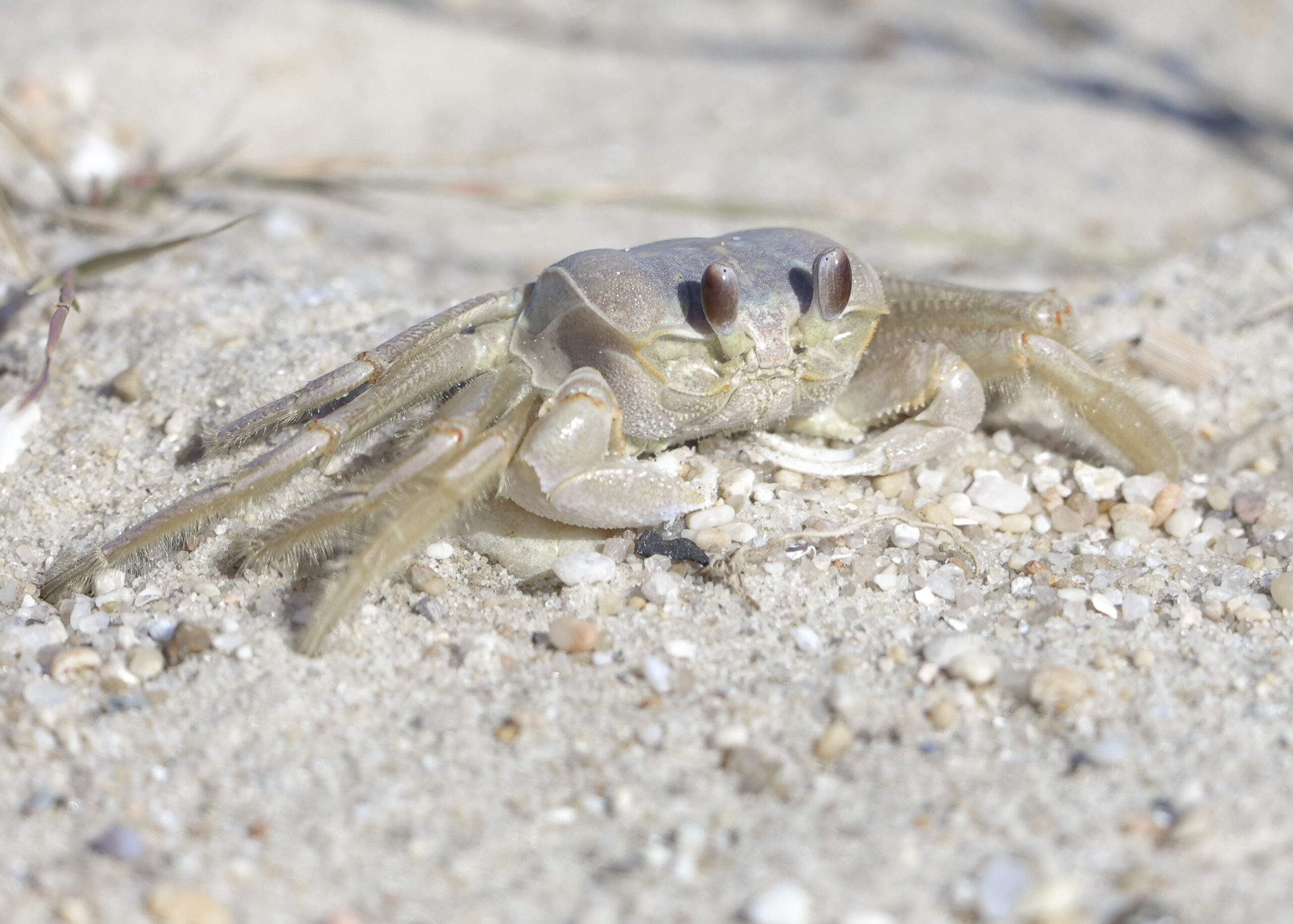Life in the Tidal Zone

By Wayne Bierbaum
Every year, I take a trip to Assateague Island. During this year’s trip, I decided to do a little surf fishing but it was really slow and crabs ate the bait I brought. But as I was waiting for that “jerk” on the line, I saw two whales spout, several pelicans skim over the surface of the waves, and lots of little shorebirds running around at the edge of the incoming waves.
The shorebirds seemed to be finding plenty of food right in front of me and hung around for quite a while. As I walked to the water’s edge, I could see a cluster of small disturbances in the sand that made small V’s in the receding waves. Those small disturbances were sand crabs (aka sand fleas, mole crabs, emerita). Under a washed-up clump of seaweed, I found several small red worms and a ghost crab went scurrying away.
The week following my trip, Hurricane Ian came through. It made me think about how those beach animals have a very fragile existence.
I returned to Rehoboth Beach last week and the erosion caused by the storm was significant. I walked several miles and could not find any clusters of sand crabs, but ghost crabs, especially little ones, seemed to be everywhere. Although I didn’t find any sand crabs over the four days that I looked, they should be able to repopulate the beaches over time.
Sand crabs are strange little crustaceans that swim and dig in the surf zone. They are about as large as the digit of a thumb and can dig into water-saturated sand extremely fast. The animals have no legs and no pinchers, just appendages that dig or swim. Sand crabs cannot move sideways, only forward or backward. They dig backward which keeps their mouth tilted up. They try to stay barely buried in swirling water and as the water moves over them, they raise two feather-like antennae to collect plankton. They can sense vibrations in the sand and will quickly burrow deeper if they feel footsteps.
The females are larger than males and can produce several hundred eggs before they are 10 months old. The eggs are released into the water and after hatching the larva circulate the coast as they go through several growth stages. That open water circulation is how the beaches get repopulated. It happens quickly as the crustaceans live only about two and a half years. They are eaten by almost every shorebird, shoreline fish, raccoon, and fox, and are used as fishing bait. Some humans even eat them; I’m told they taste like a shrimpy crab.

The ghost crabs live in holes dug in the sand above the high-tide line. They are North America’s most common terrestrial crab and like all crabs, they need to keep their gills moist to breathe. The young small crabs live in shallow holes near high tide. The larger crabs live farther away from the unpredictable waves in a hole that can be over 4 feet deep. Ghost crabs are omnivores and will eat anything from seaweed to baby turtles. They can be buried by a storm or a beach tractor and still manage to dig themselves out. Like the sand crab, ghost crabs release eggs into the water and go through several larval stages before finding a beach to call their own. They live about three years and get to about the size of a dollar. They have a 360-degreex vision and can run quite quickly. They do have pinchers. They are not targeted as food as much as the sand crab and are not suitable for human consumption. They do not seem to do well around crowds of people with beach blankets. I have observed fewer numbers in Ocean City as compared to Assateague or even Fenwick Island.
The tidal zone seems like a very harsh place to call home. Being adapted to being slammed by waves or covered by sand every day seems rather unpleasant.
